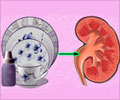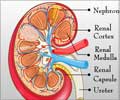Dialysis patients have significantly different blood concentrations of trace elements, which may explain increased morbidity
Dialysis patients have significantly different blood concentrations of trace elements, which may explain increased morbidity, according to a systematic review published in the open access journal BMC Medicine.
Marcello Tonelli, from the University of Alberta, Canada, led a team of researchers who investigated the trace element status of dialysis patients in 128 studies. They found that levels of cadmium, chromium, copper, lead, and vanadium were higher and that levels of selenium, zinc and manganese were lower in the hemodialysis patients, compared with controls. Tonelli said, "Since both deficiency and excess of trace elements are potentially harmful yet amenable to therapy, the hypothesis that trace element status influences the risk of adverse clinical outcomes is worthy of investigation".The researchers found that data examining any possible relation between trace element status and clinical outcomes are scarce. However, they point out that the nephrology community's experience with aluminium toxicity exemplifies the damage that uncontrolled elemental accumulation can cause, "Aluminium accumulation led to serious toxicity in dialysis patients prior to the recognition that aluminium in dialysate and oral medications was responsible. Today, such aluminium-related toxicity is extremely rare. However, the possibility that other trace elements may accumulate in patients with kidney failure and cause unrecognized chronic toxicity has received surprisingly little attention".
As well as the potentially toxic accumulation of some elements, this research highlights the reduced blood levels of others, including zinc. Tonelli points out that zinc supplementation is routinely used to correct deficiency in people from the general population, significantly reducing the risk of infection and all-cause death. He said, "Our data suggest that future studies should investigate the link between zinc or selenium status and clinical outcomes in dialysis patients, in whom the risk of infection is dramatically elevated compared to people with normal kidney function".
Source-Eurekalert
RAS











